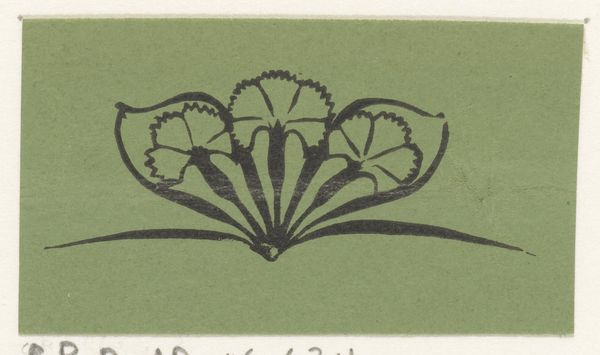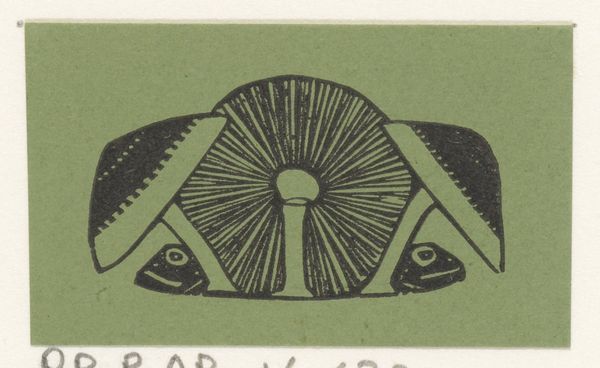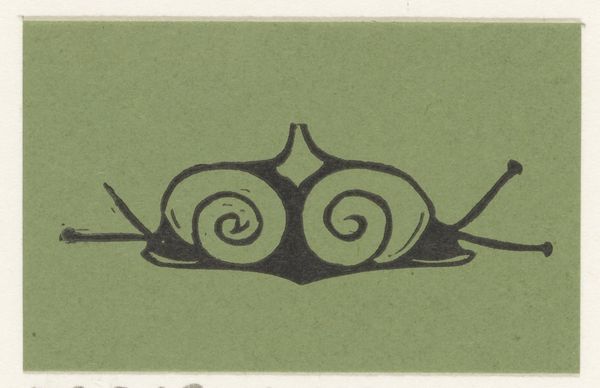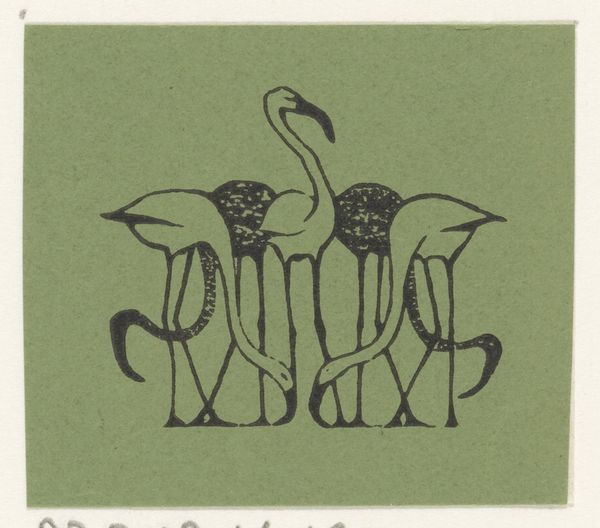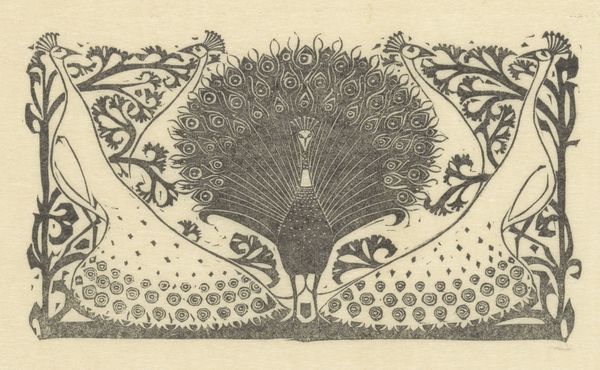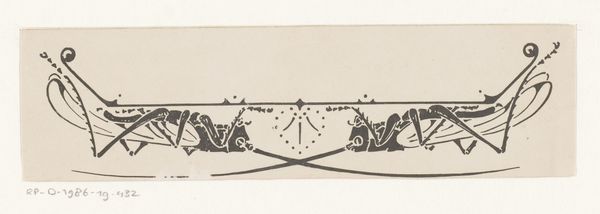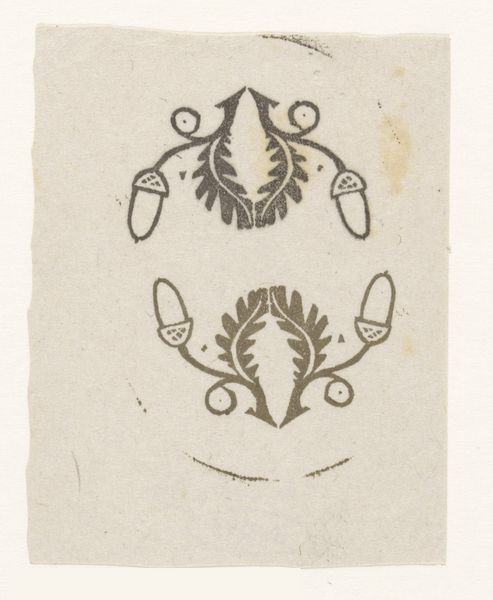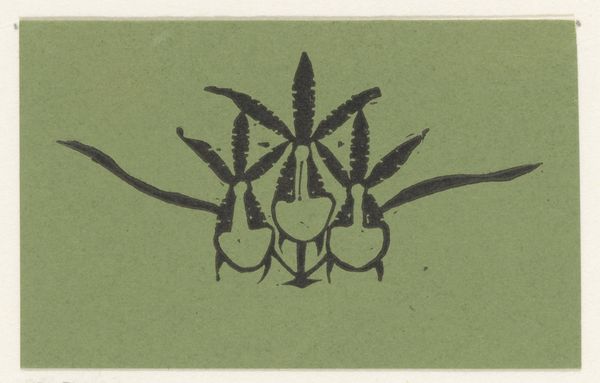
drawing, graphic-art, ink
#
drawing
#
graphic-art
#
art-nouveau
#
ink
#
plant
#
symbolism
Dimensions: height 30 mm, width 50 mm
Copyright: Rijks Museum: Open Domain
Editor: Here we have Gerrit Willem Dijsselhof's "Vignet met twee egels en een klimopblad," created around 1892 using ink. The way the two hedgehogs symmetrically mirror each other is so striking, almost like heraldry. How do you interpret this work? Curator: Well, notice how Dijsselhof isn't just depicting hedgehogs; he's invoking archetypes. These animals, rendered with stylized quills and that centrally placed ivy leaf, take on a totemic quality. The hedgehog, often associated with resourcefulness and protection, is doubled, facing inward as if guarding a secret, which is emphasized with the spade leaf. Doesn't this spade prompt thoughts about nature, the forest, life? Editor: Definitely! The spade shape draws the eye immediately, and it all feels so intentional, as if nothing is accidentally placed. Curator: Precisely! This echoes the broader Symbolist movement, which sought to imbue natural forms with deeper significance, unlocking hidden layers of meaning and connecting them to universal narratives. Consider how the symmetry almost turns this vignette into a logo, a seal hinting at hidden knowledge. What memories or emotions does that evoke for you? Editor: That makes sense; it gives me a sense of secrecy and belonging. Thanks! I see the animals completely differently now. Curator: That is exactly the effect Dijsselhof sought! We decode fragments of old traditions. Each viewer brings their unique cultural memory to the work, perpetuating that cycle of interpretation. Editor: That’s incredible to think about! I am so excited to dig deeper now.
Comments
No comments
Be the first to comment and join the conversation on the ultimate creative platform.


